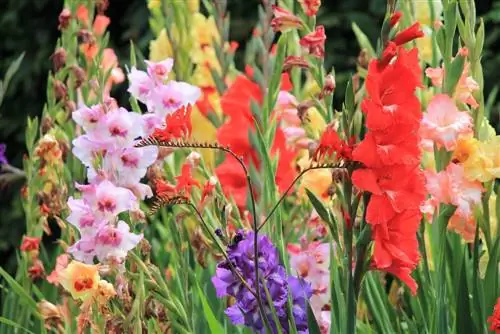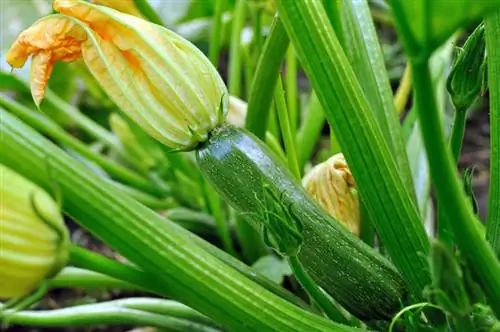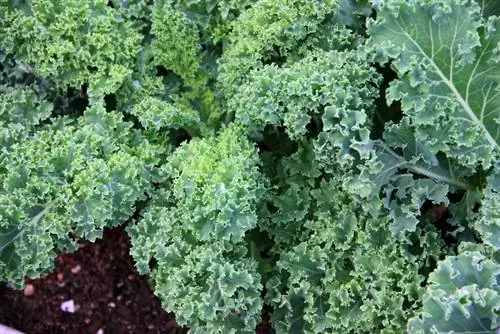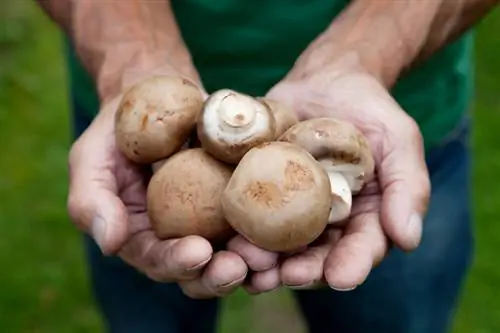- Author admin [email protected].
- Public 2023-12-16 16:46.
- Last modified 2025-01-23 11:22.
The gladiolus brings a majestic touch to front gardens and gardens. It also impresses with its size of up to one and a half meters and its variety of colors. You can read all the characteristics of the gladiolus in our plant portrait.

What is a gladiolus and what conditions does it need to grow?
The gladiolus is a majestic plant with a growth height of up to 150 cm and a variety of colors. It belongs to the iris family (Iridaceae) and prefers sunny, wind-protected locations with nutrient-rich soil. The main flowering period is in July and August.
Plant profile:
Systematics:
- Botanical name: Gladiolus
- Class: Angiosperms (Monocotyls)
- Order: Asparagales (Asparagales)
- Family: Iris family (Iridaceae)
- Genus: Gladiolus (Gladiolus)
- Type: Garden Gladiolus
Botanical:
- Growth height: Up to 150 centimeters
- Growth habit: Evergreen, perennial, herbaceous with tubers as a survival organ
- Main flowering period: July and August
- Flowers: Terminal, branched or unbranched, spiked inflorescences
- Flower color: white, green, yellow, orange, red, violet, pink, smoky gray, brown
- Leaves: Parallel-nerved, sword-like
Origin
The distribution area of the over 200 species of gladiolus extends from southern Europe through the Near East to Africa. The gladioli with the most beautiful flowers thrive in South Africa. Only one species grows wild in southern Germany. This is the highly endangered Swamp Wurst (Swamp Gladiolus).
Location and substrate
Gladiolus prefer a sunny and wind-protected place. They grow particularly well on deep, permeable and very nutrient-rich soils. If the soil is heavily compacted, you should enrich the substrate with some coarse sand and compost.
Plant gladioli at the end of April at the earliest, as the shoots are extremely sensitive to frost. You can also grow the flowers in pots and transplant them into the flowerbed after the ice saints.
Care
Watere regularly when the top few inches of soil feel dry. Once the shoots have reached half of the total height, additional fertilization with a potassium-rich preparation (€27.00 on Amazon) ensures that the hungry plants have enough strength to form flowers. Repeat this fertilization every two to three weeks until all flowers have opened.
Cut
As soon as the first two to three flowers on a stem have opened, you can remove flower stems for the vase. Do not cut them directly above the ground, but leave five centimeters. This allows the plant to store nutrients in the tuber and forms new daughter tubers.
Cut back gladioli that have bloomed in the bed when seeds form. These would cost the plant unnecessary energy and weaken the tubers.
Wintering
In autumn, the cut-back shoot turns yellow.
- Now carefully dig up the tubers.
- Clean them and store them in an airy place for a few days.
- Separate the daughter tubers from the old ones.
- Put the storage organs into a sandbox.
- Store the tubers frost-free and cool until next year.
Diseases and pests
Bulb and stem rot as well as leaf spot diseases can cause serious damage to gladioli that are not in an optimal location. Remove infected plants immediately and dispose of them with household waste.
Tip
Young gladiolus flowers in particular are a tasty delicacy. Carefully plucked from the stem, they add a colorful touch to summer salads and dishes.






